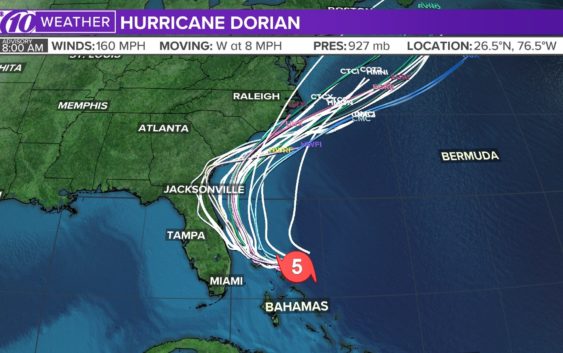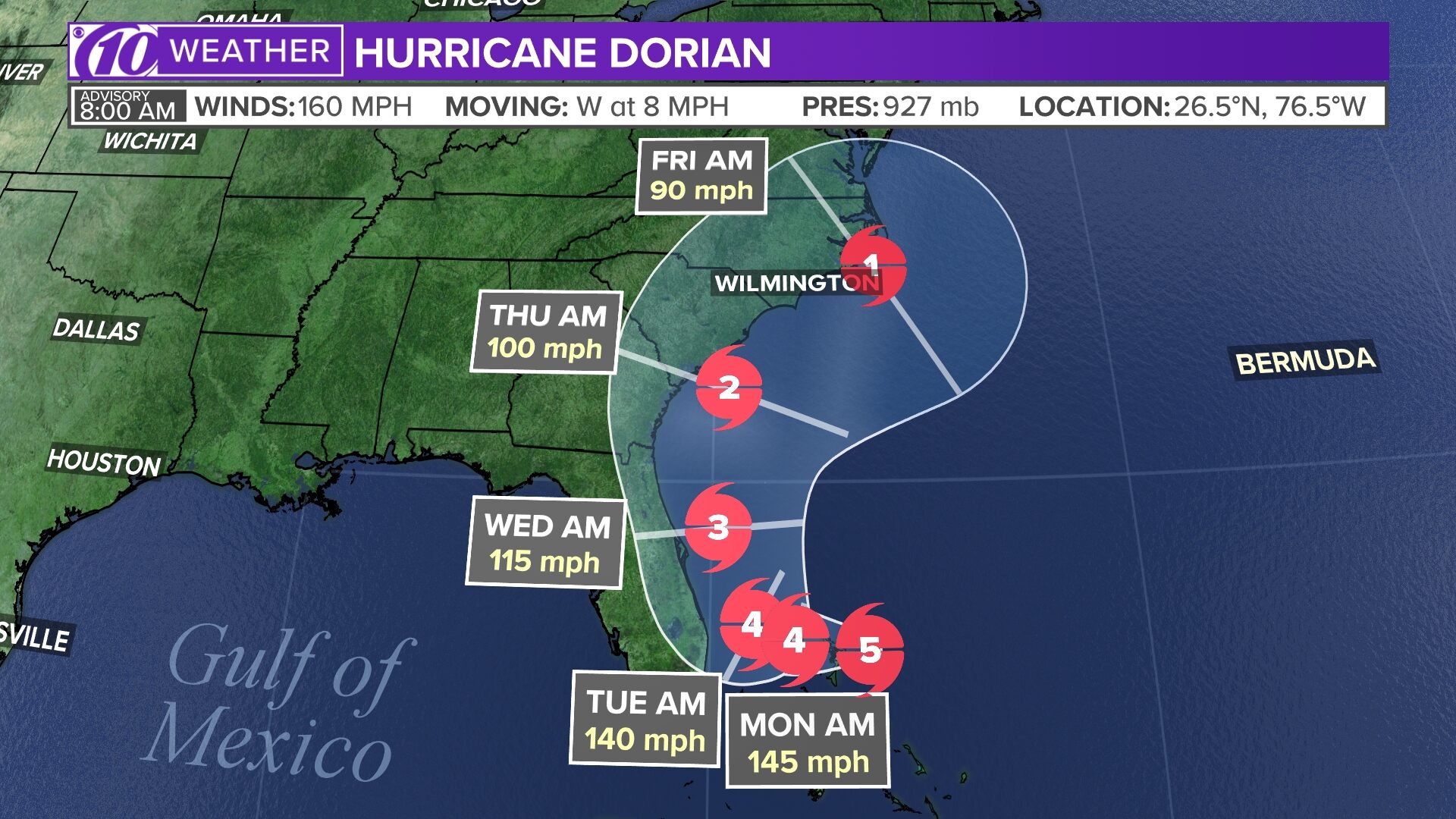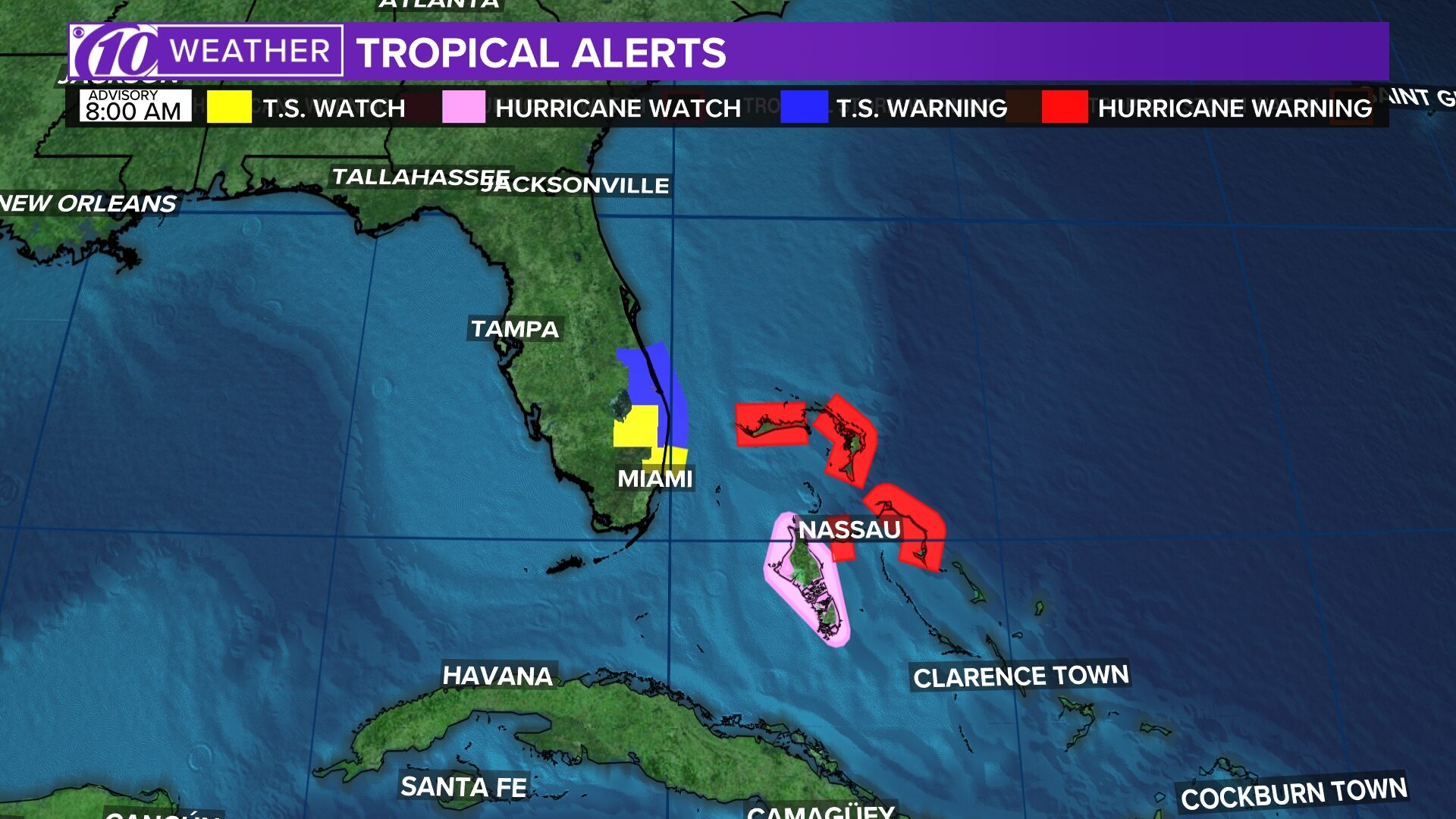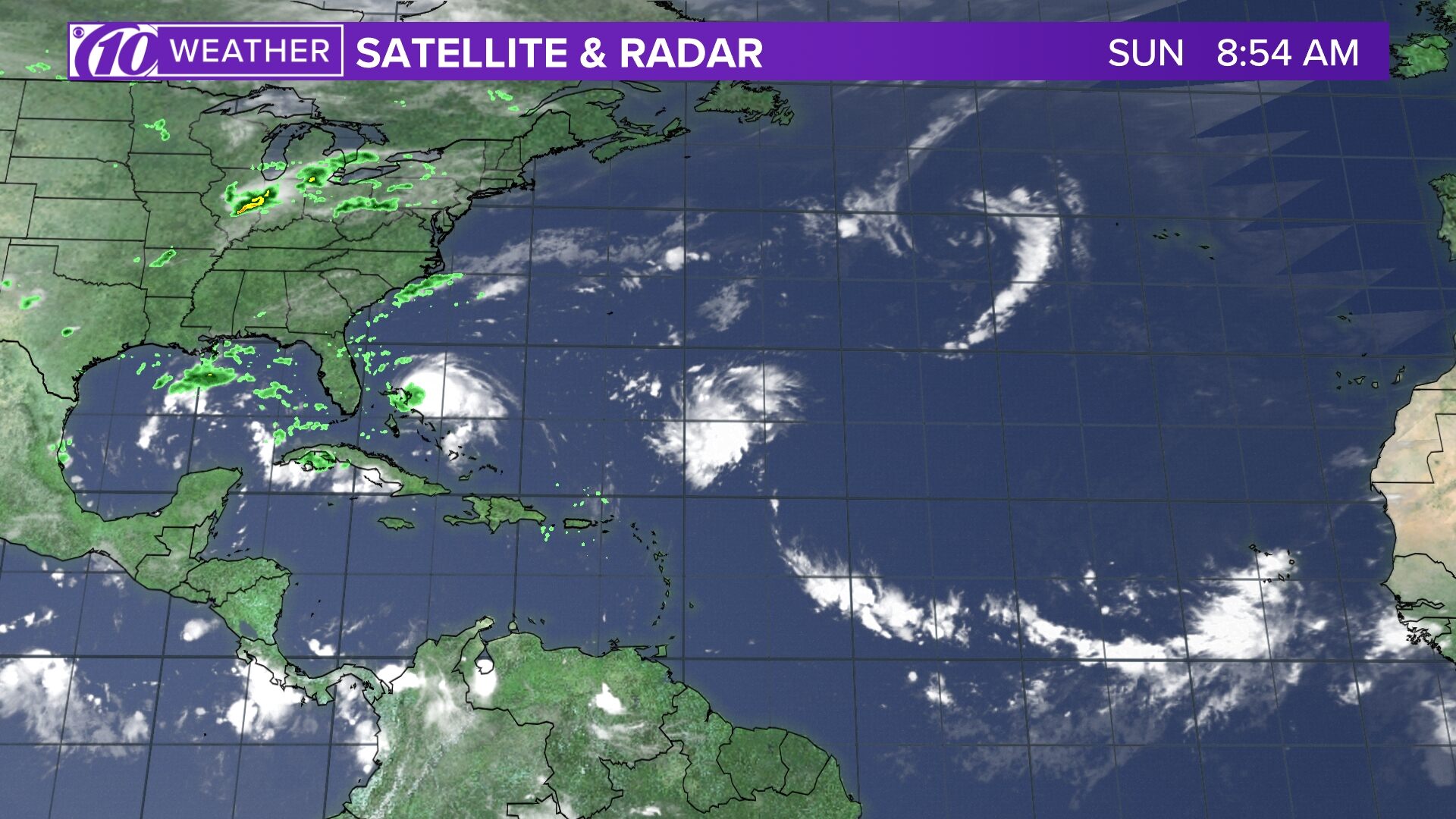- Caddo Mounds State Historic Site to celebrate new visitor center, traditional grass house after 2019 tornado
- Flooding continues to wreak havoc on Southeast Texas homes
- Houston-area storm damage updates: NWS says two EF-1 tornadoes and powerful derecho event hit SE Texas
- Houston-area storm damage updates: NWS says two EF-1 tornadoes and powerful dericho event hit SE Texas
- NWS confirms two EF 1 tornados touched down Thursday -- one in the Cypress area and one in Waller County
Hurricane Dorian still not moving as destructive winds slam the Bahamas

ST. PETERSBURG, Fla — Hurricane Dorian is stationary as it continues to devastate the Bahamas.
The Category 4 hurricane is about 25 miles northeast of Freeport and roughly 105 miles east of West Palm Beach, Florida, according to the National Hurricane Center’s latest advisory.
The storm is producing maximum sustained winds up to 145 mph as it remains a Category 4 storm.
Grand Bahama Island continues to experience catastrophic winds and storm surge. It first made landfall in Elbow Cay, Bahamas, around 12:45 p.m. Sunday with maximum sustained winds of 185 mph as a Category 5 hurricane. Hurricane Dorian’s falling wind speeds since then made it a Category 4 storm Monday morning.
However, Dorian remains an extremely destructive storm.
The most reliable weather computer models have been consistent in keeping the powerful storm just off the Florida coast and away from landfall. These models, however, are not forecasts — and they tend to change with every update.
In fact, some models include parts of Florida’s east coast for significant impacts or a potential landfall.
LIVE BLOG: The latest, need-to-know information on Hurricane Dorian
The following watches and warnings are in effect:
- Hurricane warning: Grand Bahama and the Abacos Islands in the northwestern Bahamas, Jupiter Inlet to Ponte Vedra Beach
- Hurricane watch: North of Deerfield Beach to Jupiter Inlet, Flagler/Volusia County line to the Altamaha Sound Georgia
- Tropical storm warning: North of Deerfield Beach to Jupiter Inlet, north of Ponte Vedra Beach to South Santee River
- Tropical storm watch: North of Golden Beach to Deerfield Beach, Lake Okeechobee
- Storm surge warning: Lantana to Altamaha Sound
- Storm surge watch: North of Deerfield Beach to south of Lantana, Altamaha Sound to South Santee River
RELATED: What’s the difference between a hurricane watch and a warning?
The National Hurricane Center said hazards for the islands include winds gusts greater than 180 mph and storm surge 12-18 feet above normal tide levels, with possibly higher waves.
10Weather and National Hurricane Center meteorologists expect the core of Dorian to continue a churn near the Bahamas.
From there, the latest data suggests Dorian will make that eventual slow turn to the north. This is a positive forecast for the Tampa Bay region but one of most concern for Florida’s east coast because a slow, powerful storm that rides the coastline is likely to bring more prolonged and significant impacts.
Again, stay tuned to the latest forecast as Dorian’s track and intensity become more certain.
►Track the weather and get severe alerts when they happen: Download the 10 News app now.
►Stay informed with all tropical weather: Check out our must-have interactive Hurricane Headquarters guide here.
Spaghetti models
Each line represents a computer model’s best “guess” of where the center of the storm will go. Together, they look like spaghetti noodles. Remember, impacts from a tropical system can and do occur miles away from the center.
App users — tap here if you cannot see the image below.
Tropical track
This is the latest “cone of uncertainty,” which shows an area where the center of the storm could go, when and how strong it might be at the given time.
App users — tap here if you cannot see the image below.

Satellite and radar
The latest satellite and radar image for the Gulf of Mexico, Caribbean Sea and Atlantic Ocean.
App users — tap here if you cannot see the image below.
Watches and warnings
What’s a watch? What’s a warning? Here are the official alerts that can be issued for your area and what you should do.
App users — tap here if you cannot see the image below.

